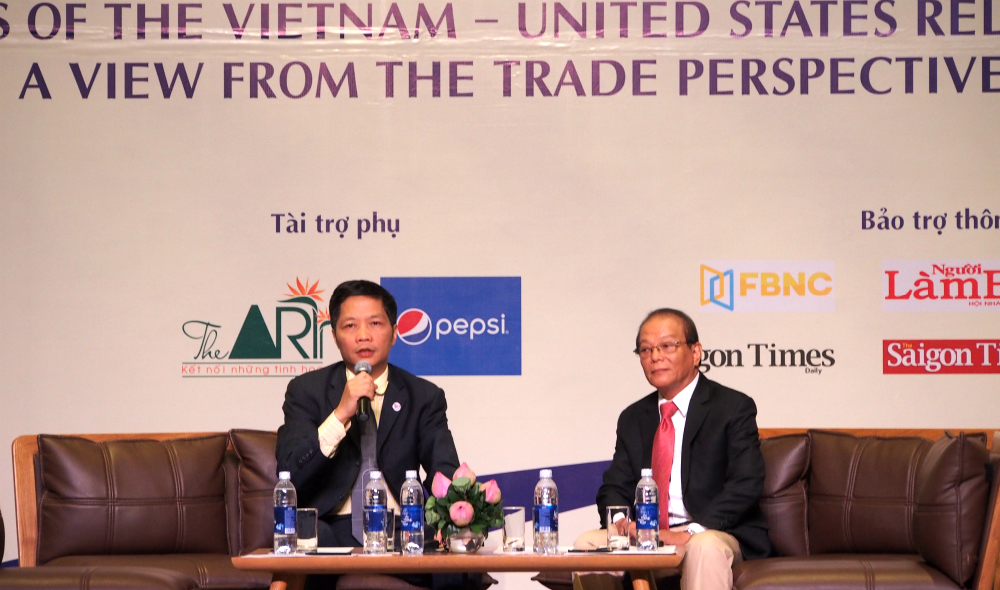Vietnam has approved a plan to raise export revenue to US$300 billion by 2020 so that the country can remove trade deficits following a newly approved scheme, according to the government’s online portal chinhphu.vn.
Under a government plan to boost Vietnamese exports by expanding Vietnam’s markets in 2015-20, with a vision to 2030, Deputy Minister of Industry and Trade Tran Tuan Anh told chinhphu.vn that the target is feasible.
According to a report by the ministry unveiled last month, the country may earn $165-166 billion in export revenue by the end of this year, a 10 percent year-on-year increase, while trade deficits were projected to reach $5.5-6 billion.
In 2014, Vietnam enjoyed a $2 billion trade surplus, the third consecutive year the country had suffered no trade deficit.
In fact, Vietnam is building growth and development plans based on the analysis and assessment of the competitiveness and ability of the national economy in the context of globalization, Deputy Minister Anh said.
“With such an ambitious target of $300 billion in export turnover by 2020, we do have a factual basis for it,” he said.
For example, Vietnam achieved a relatively high growth rate in exports with an average expansion ratio of 20-25 percent per year in 2001-10, he said.
In the 2010-14 period, though growth slowed down, it still maintained the speed of 17 percent per year, and this figure was much higher than the target set by the lawmaking National Assembly, the official added.
In 2015, the National Assembly set the goal of 10 percent for export growth, and the surge in the first nine months was estimated to be 9.6 percent, so the 10-percent target can be fully realized, he said.
As a result, this goal is feasible if Vietnamese firms can seize good opportunities created by many trade deals in some strategic markets in line with the national economic restructuring scheme.
Regarding how to consolidate and gradually expand the market share of Vietnamese goods in traditional markets and create breakthroughs in new export destinations, Deputy Minister Anh said Vietnam has many favorable conditions, such as its geographical location, a stable political environment, stable macroeconomic conditions, which are all good for attracting foreign investment.
Besides, the local economy is transforming into a socialist-oriented market economy, a process which will liberate many production forces on the basis of improving competitiveness and enhancing the value-added of locally made products, he said.
Simultaneously, with the signing of several free trade agreements, Vietnam is in a favorable position to leverage new opportunities in the new markets and gain more access to potential markets, such as Europe, Japan, South Korea, and Chile, he said.
These are large-scale markets which consume export products of Vietnam including textiles, footwear, processed food, fisheries, and agricultural produce.
“So, in the medium term, we should aim to continue to grow both in width and depth, focusing on expanding market share on the basis of enhancing value added, creating stability in distribution systems in both old and new markets,” the deputy minister said.
Regarding the importance of the U.S. and Canadian markets, which account for 20 percent of Vietnam's total exports, Deputy Minister Anh said the key is that every exporter needs to raise their own production capacity and competitiveness.
In fact, in the past decade, Vietnamese enterprises have exploited the two North American markets very well, especially the U.S.
Each year, the average growth rate of Vietnamese merchandise exported to the U.S. tops 17-20 percent, and many Vietnamese products have gained a foothold in this market.
However, the U.S., Canada and other markets have increasingly strict regulations on product quality through technical barriers, including “hard” and “soft” ones.
While “hard” technical barriers are the principles relating to the law of those countries, the “soft” ones are related to the domestic economic sectors which set them up to protect the interests of the domestic industries.
Like us on Facebook or follow us on Twitter to get the latest news about Vietnam!


















































